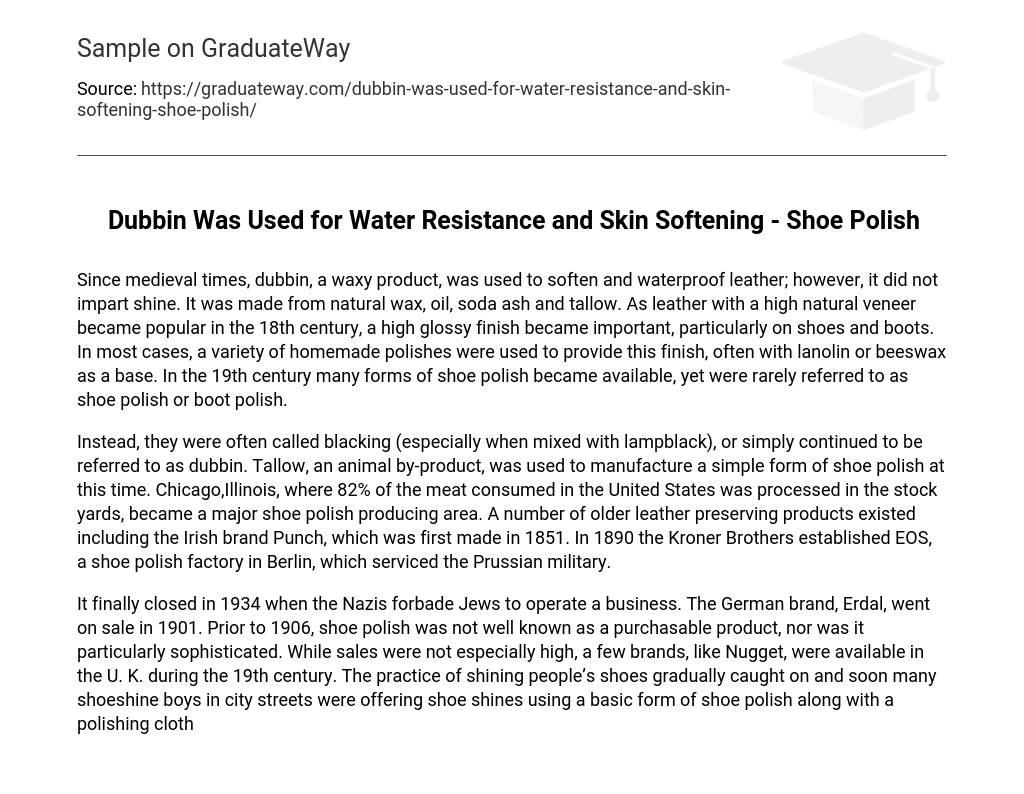Since medieval times, dubbin, a waxy product, was used to soften and waterproof leather; however, it did not impart shine. It was made from natural wax, oil, soda ash and tallow. As leather with a high natural veneer became popular in the 18th century, a high glossy finish became important, particularly on shoes and boots. In most cases, a variety of homemade polishes were used to provide this finish, often with lanolin or beeswax as a base. In the 19th century many forms of shoe polish became available, yet were rarely referred to as shoe polish or boot polish.
Instead, they were often called blacking (especially when mixed with lampblack), or simply continued to be referred to as dubbin. Tallow, an animal by-product, was used to manufacture a simple form of shoe polish at this time. Chicago,Illinois, where 82% of the meat consumed in the United States was processed in the stock yards, became a major shoe polish producing area. A number of older leather preserving products existed including the Irish brand Punch, which was first made in 1851. In 1890 the Kroner Brothers established EOS, a shoe polish factory in Berlin, which serviced the Prussian military.
It finally closed in 1934 when the Nazis forbade Jews to operate a business. The German brand, Erdal, went on sale in 1901. Prior to 1906, shoe polish was not well known as a purchasable product, nor was it particularly sophisticated. While sales were not especially high, a few brands, like Nugget, were available in the U. K. during the 19th century. The practice of shining people’s shoes gradually caught on and soon many shoeshine boys in city streets were offering shoe shines using a basic form of shoe polish along with a polishing cloth.





